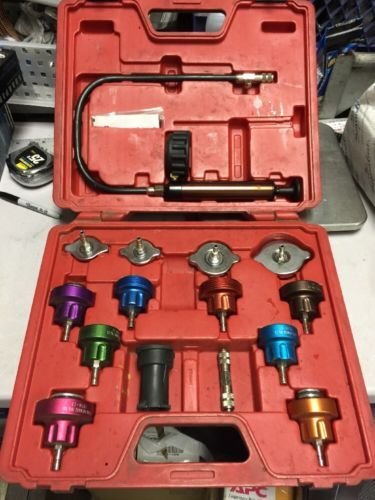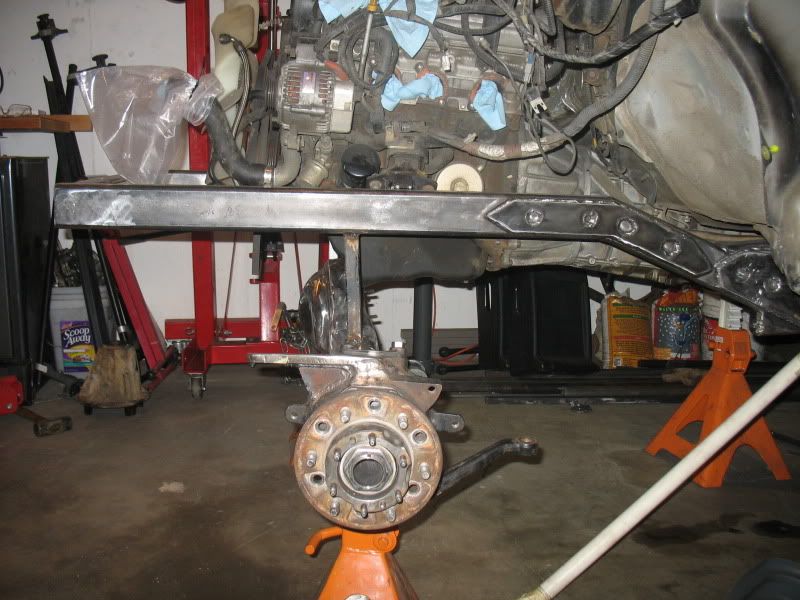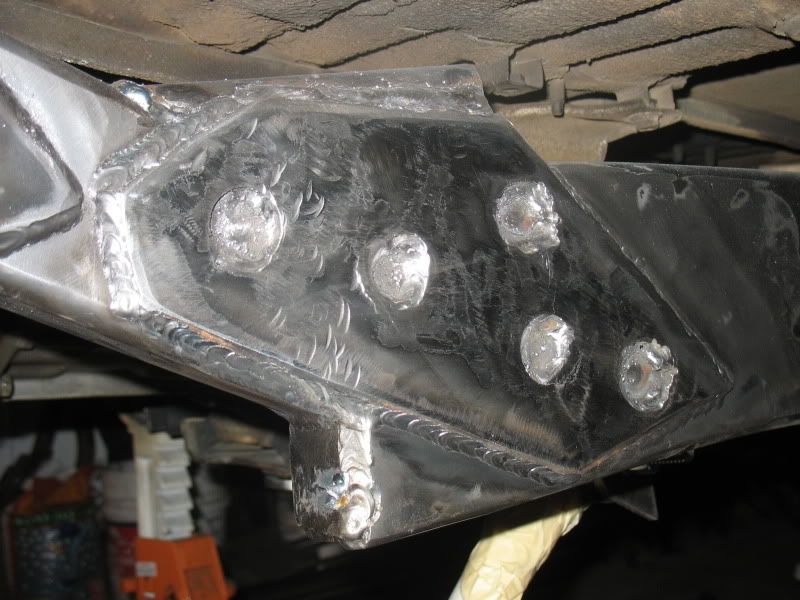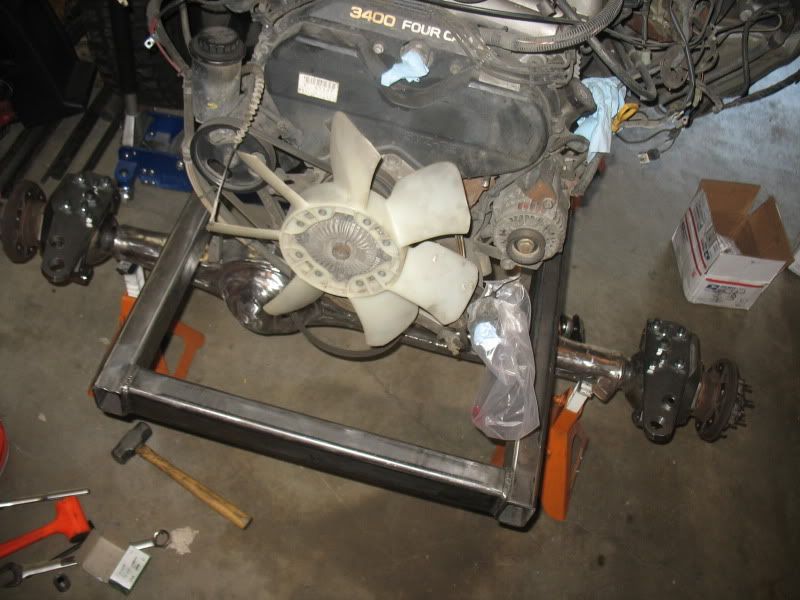Perfect! That's exactly what I needed to know. I'll probably bug you more in a couple months when I start assembling all the goodies for the build. I was looking through the Marlin Crawler website to try and figure out if it's cost-effective for me to throw gears into a second transfer case and rebuild my current transfer case with the 23 spline output shaft or not. It almost looks like it's lower cost to just send them two transfer boxes and get back the complete ultimate setup they have.
Another question: 27 vs 30 spline drive shaft? Worth going up spline count on this or sticking with factory? (at least that's how I currently understand it... my knowledge here might not be right)
Yes I would rather regear only once than come back for a second set of gears to bump up to 5.29:1 (I think that's the preferred next step up?). However, I'm not sure how HUGE I want to go with the tires. I still want to be able to make this a daily driver and not have a $3k/yr tire budget. Also I want the overlanding aspect to be there and not just a gnarly rock muncher.
I've been eyeing the
All Pro Offroad SAS kit for a few weeks now and it looks like I'd gain at least five inches of lift up front from the kit with a possibility of 6" if I wanted it. I'm aware of the concept of too much lift so I guess that's why people cut into the frame to sink the shackles into it a bit to reduce lift height? Do people redo their frames very often to make them mimic the 1985 and earlier frame design? Long ago I did some work with frames on semi trucks and at least in that industry it seemed pretty common for people to slice and dice their fames in all sorts of inventive and possibly destructive ways.
Maybe there will be a few 35" or 37" shoed minitrucks on the Argentine Pass run this weekend so that I can check out what that looks like.
This all would have been easier if I could have found a 1985 4runner



27 splines it is then!
I agree. And that's before lift from the upsized tires. Next time I do a huge 4runner build, I'll be sure to sit on my thumbs long enough to find a 1985 that is mostly rust free. This time I waited a year before I found my 1988. Waiting is HARD.

See, this is all Dan's fault. If he hadn't spoiled me with testing out his stock 1985 with solid axles, I would probably have stayed happy and ignorant with my IFS.

More seriously though, I don't want to end up with a minimonster truck at least on this build. I'd rather have something scrappy than a brute. Hmm I'll have to look at my chassis and body a bit to see how hard it would be to do major frame modifications.
By 27 or 30 spline, I assume you mean axles. Not drive shaft. Drive shaft (colloquially) refers to the shaft connecting your tcase to your axle. Dave is referring to the birfields, or front axle shafts. I disagree with Dave, and would go 30 spline, but thats just my mentality. I've done enough things where I didn't build it strong enough and was super annoyed about having to go back and redo it later. However, if you stick with 33's, stock birfs are fine. Larger, and I'd go with 30 spline chromoly stuff from RCV or similar.
For your project, you WILL need to get your driveshafts done. You will need to shorten the rear and lengthen the front for the dual transfercases. For the front, you will need a long travel slip (the splined section) as your current IFS shaft has almost no slip (diff and tcase are fixed front to back in relation to each other. Solid axle moves a bunch).
------------------------------------
Now, onto your question about frames. Don't beat yourself up about not finding an 85. For what you want to do, you would be lifting it anyway to put on an IFS steering box, and high steer, like I said. The factory solid axle trucks have Jsteer which does not like to hold up well under wheeling abuse as soon as you go bigger than stock tires (shares a lot of that with the IFS trucks LOL). Most people upgrade their 85 and earlier trucks this way.
The frame modification for an IFS truck (frenching the leaf spring hangars) is VERY minor. Modifying it to mimic the 85 frame swoop over the axle is almost never done with leaf springs.
It is done a lot with link suspensions, because you can tuck the axle up a lot more with links, and get a much lower ride height. I did this on my 89. Cut the frame off just infront of the cab mounts in front of the door, and completely redid the front frame. This was to try to achieve a 20" or so frame height on 37's, 18 or so on 35's.
You can see here where I cut, welded, and fully plated all the seams on the 1/4" rectangular tubing. This truck was being linked, with an FJ80 front axle. The other advantage of going this way is that it gives you a MUCH stouter base to weld all of your link brackets, steering box mount, coilover mounts, etc... Rather than trying to plate the 1/8" stock frame. (disregard oilpan and such, this truck was swapped to a 3.4L V6.
You can also see the high steer arms (though these are not what you will have for a mini truck or 60 series front axle).
This is NOT worth doing on leaf springs, in my opinion. Way too much work for almost no benefit. Leafs sit higher. Just the way it is. You also have to push the motor up to go low. You will start hitting your oil pan before you get into the frame much.
My recommendation is to just do a kit. You can get lower than 5". A very popular front spring option is called "rears up front". You build custom leaf packs from stock rear springs that you get from a junk yard (very cheap this way too). You can dial in your lift however you want, usually in the 3" or so range, but you can go up from there if you like. They also have an offset spring pin location (axle is not centered on the spring, it is moved forward a tad). This gives you much better clearance for the rear of your fenders, but means you need to move the steering box forward more than you do on a SAS with a centered spring pin.
However I can show you in the wiring diagrams some convenient places to dig into.












